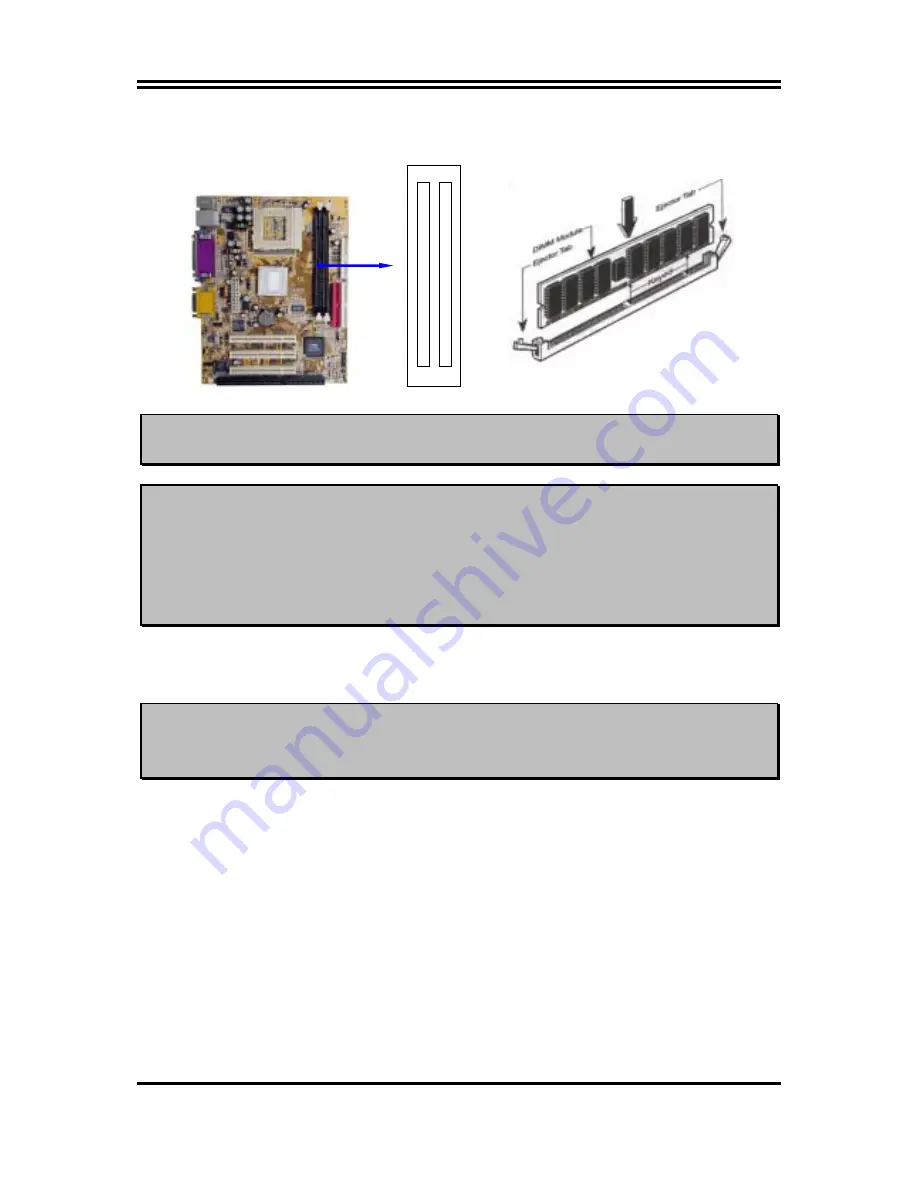
12
Generally, installing SDRAM modules to your motherboard is very easy, you can refer
to figure 2-4 to see what a 168-Pin PC100 & PC133 SDRAM module looks like.
DI
M
M
2 (
BAN
K2
+
BAN
K3
)
DI
M
M
1 (
BAN
K0
+
BAN
K1
)
NOTE!
When you install DIMM module fully into the DIMM socket the eject tab should be
locked into the DIMM module very firmly and fit into its indention on both sides.
WARNING!
If the SDRAM CLOCK is set at 133MHz, you must use only PC133-
compliant DIMMs. When this motherboard operate at 133Mhz, most
system will not even boot if non-compliant SDRAM modules are used
because of the strict timing issues, if your DIMM are not PC133-
compliant, set the SDRAM clock to 100MHz to ensure system’s
stability.
2-5 Expansion Cards
WARNING!
Turn off your power when adding or removing expansion cards or
other system components. Failure to do so may cause severe damage
to both your motherboard and expansion cards.
2-5-1 Procedure For Expansion Card Installation
1.
Read the documentation for your expansion card and make any necessary hardware
or software setting for your expansion card such as jumpers.
2.
Remove your computer’s cover and the bracket plate on the slot you intend to use.
3.
Align the card’s connectors and press firmly.
4.
Secure the card on the slot with the screen you remove above.
5.
Replace the computer system’s cover.
6.
Set up the BIOS if necessary.
7.
Install the necessary software driver for your expansion card.
2-5-2 Assigning IRQs For Expansion Card
Figure 2-4
















































